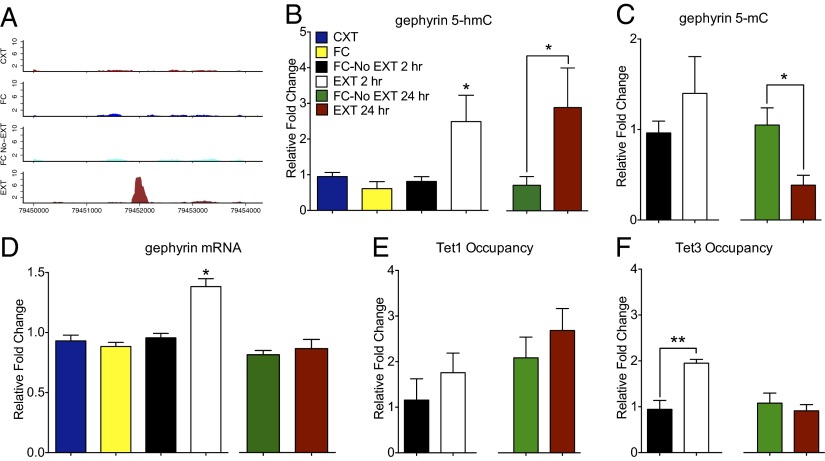Fig. 3.
Fear extinction learning increased the accumulation of 5-hmC and Tet3 surrounding the extinction-related gene, gephyrin. (A) Extinction training led to a persistent increase in 5-hmC within an intron of the gene encoding gephyrin. Shown is the normalized depth of coverage for this peak and its nearby region in each of the conditions. (B) A significant enrichment of 5-hmC within the intronic region of gephyrin occurred after fear extinction training [n = 3–4 per group, 2 h; F3,14 = 5.29 (P < 0.01); Tukey’s post hoc analysis FC-No EXT 2 h vs. EXT 2 h (*P < 0.05), 24 h; t6 = 2.24 (P < 0.05). (C) This effect was accompanied by a reduction in 5-mC 24 h after extinction training (n = 4 per group, 24 h, t6 = 3.03; P < 0.05. (D) Fear extinction led to a transient increase in gephyrin mRNA expression (n = 4–5 per group; F3,19 = 4.08; P < 0.05; Tukey’s post hoc analysis FC-No EXT vs. EXT, *P < 0.05). (E) There was a trend toward an increase in Tet1 occupancy within the intronic region of the gephyrin gene 24 h after extinction training. (F) Fear extinction learning leads to a transient increase in Tet3 occupancy (n = 3–5 per group; F3,15 = 17.58; P < 0.001; Tukey’s post hoc analysis FC-No EXT 2 h vs. EXT 2 h, **P < 0.01).

